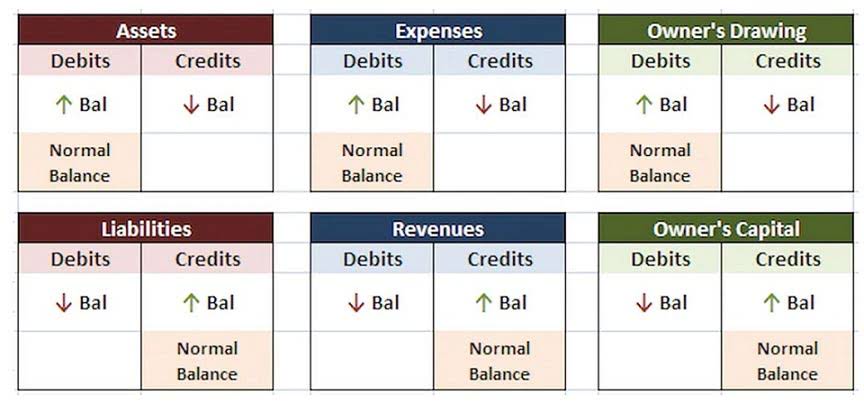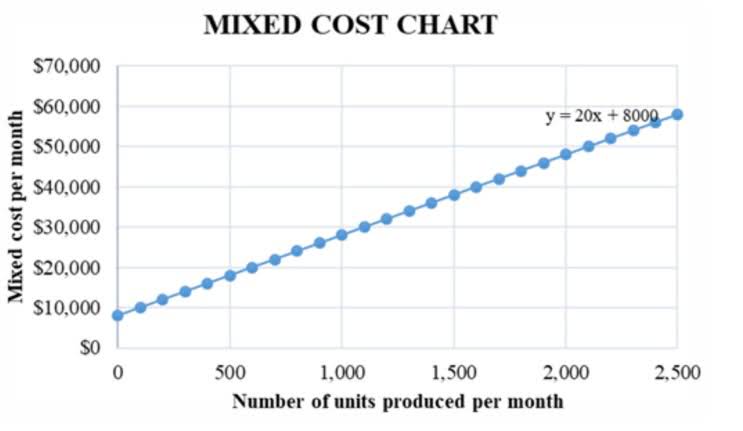Content
- Which Of The Following Accounts Has A Normal Debit Balance? A Accounts Payable B Sales
- What Is A Debit In Accounting?
- Which Of The Following Would Cause The Trial Balance To Be Out Of Balance?
- Which Accounts Normally Have Debit Balances?
- Account
- Contra Accounts
- Where Is The First Place Every Transaction Is Recorded?

This a visual aid that represents an account in the general ledger. The name of the account is posted above the top portion of the T.
Anyone with a checking account should be relatively familiar with them. But as a business owner looking over financials, knowing the basic rules of debits and credits in accounting is crucial. All normal liabilities have a credit balance.
12 Mindless Habits That Are Slowly Depleting Your Wealth – The Motley Fool Canada
12 Mindless Habits That Are Slowly Depleting Your Wealth.
Posted: Tue, 30 Nov 2021 14:15:00 GMT [source]
As such, memorization usually precedes comprehension. Take time now to memorize the “debit/credit” rules that are reflected in the following diagrams. Going forward, one needs to have instant recall of these rules, and memorization will allow the study of accounting to continue on a much smoother pathway. Full comprehension will follow in short order. Debit refers to the left side of an account, while credit refers to the right.
You need to learn the debit/credit rules. First, we need to understand double-entry accounting.
Which Of The Following Accounts Has A Normal Debit Balance? A Accounts Payable B Sales
” You can now remember port is red and on the left side. Let’s look at another situation that uses different terms for left and right, shipping. Credit means to put an entry on the right side of the account. Since 1919, UCLA Student Media’s publications have been at the forefront of capturing UCLA’s history. Get millions of various questions with their answers. Textbook content produced by OpenStax is licensed under a Creative Commons Attribution-NonCommercial-ShareAlike License 4.0 license. G. We receive 25% of the money owed by customers in “D”.

The business collects from one of its clients for services rendered earlier in the month $1,500. Office supplies worth $750 are purchased on account. 24.LO 3.5Can a credit entry be described as a generally positive or negative transaction? They are not paid for; the company will be billed. The simplest account structure is shaped like the letter T. The account title and account number appear above the T.
What Is A Debit In Accounting?
The previous chapter showed how transactions caused financial statement amounts to change. “Before” and “after” examples were used to develop the illustrations. Imagine if a real business tried to keep up with its affairs this way! Perhaps a giant marker board could be set up in the accounting department.
- So debits and credits don’t actually mean plusses and minuses.
- The entries would be a debit of $3,200 to raw materials inventory and a credit of $3,200 to accounts payable.
- Follow the financial statement progression from the Income Statement to the Retained Earnings Statement to the Balance Sheet.
- EA25.LO 3.6Prepare an unadjusted trial balance, in correct format, from the alphabetized account information as follows.
- Part of that system is the use of debits and credit to post business transactions.
A business must engage in similar activities to make sure that all transactions and events are recorded correctly. Good controls are essential to business success. Much of the work performed by a professional accountant relates to the design, implementation, and evaluation of properly functioning control systems. Accumulated Depreciation is a contra-asset account . For contra-asset accounts, the rule is simply the opposite of the rule for assets. Therefore, to increase Accumulated Depreciation, you credit it.
Many people wrongly assume that credits always reduce an account balance. However, a quick review of the debit/credit rules reveals that this is not true. Probably because of the common phrase “we will credit your account.” This wording is often used when one returns goods purchased on credit. Carefully consider that the account is on the store’s books as an asset account . Thus, the store is reducing its accounts receivable asset account when it agrees to credit the account.
Which Of The Following Would Cause The Trial Balance To Be Out Of Balance?
Bob’s vehicle account would still increase by $5,000, but his cash would not decrease because he is paying with a loan. Instead, his liabilities account would increase. The balance sheet is one of the three fundamental financial statements. The financial statements are key to both financial modeling and accounting. LO 3.5Prepare journal entries to record the following transactions. LO 3.4Identify whether each of the following transactions would be recorded with a debit or credit entry.

The debit balance in Cash Short and Over at the end of an accounting period is reported as a. Money orders, and money on deposit that is available for unrestricted withdrawal c. Is a credit reference letter written by the company’s bank. Lets a company know the financial position of the bank as of a certain date. Is a bill from the bank for services rendered. Shows the activity that increased or decreased the company’s account balance. Asset accounts get increased with debit entries, and expense account balances increase during the accounting period with debit transactions.
The types of accounts to which this rule applies are liabilities, equity, and income. The chart below can help visualize how a credit will affect the accounts in question. So every time you make money or spend money, just remember that at least one account will be debited and one will be credited. And this happens for every which of the following accounts has a normal debit balance single transaction (which is part of why bookkeeping can be time-consuming). The allowance for doubtful accounts appears on the balance sheet and reduces the amount of receivables. The accounts that have a normal credit balance include contra-asset, liability, gain, revenue, owner’s equity and stockholders’ equity accounts.
Which Accounts Normally Have Debit Balances?
The purchase was made from one of the company’s suppliers with payment due in 30 days. The most basic type of bank account is the checking account. Accounts payable include all of the company’s short-term debts or obligations. For example, if a restaurant owes money to a food or beverage company, those items are part of the inventory, and thus part of its trade payables. Liabilities are debts owed by the business. These debts are called payables and can be short term or long term.
This is why we have two sides for each account. — Now let’s take the same example as above except let’s assume Bob paid for the truck by taking out a loan.

Let’s illustrate this process with a simple example. Suppose the office manager spends $375 to buy paper, pens and toner for the printer and pays for this purchase by writing a check. One way to remember is the question, “Is there any red port wine left in the bottle?
Account
4.LO 3.2Does every transaction affect both sides of the accounting equation? A contra liability account is a liability account that is debited in order to offset a credit to another liability account. Debit cards allow bank customers to spend money by drawing on existing funds they have already deposited at the bank, such as from a checking account. The first debit card may have hit the market as early as 1966 when the Bank of Delaware piloted the idea.
The balance sheet formula remains in balance, because assets are increased and decreased by the same dollar amount. The balance sheet formula determines whether you use a debit vs. credit for a particular account. The balance sheet is one of the three basic financial statements that every owner analyzes to make financial decisions. Owners also review the income statement and the statement of cash flow. You would debit accounts payable because you paid the bill, so the account decreases.
Preparing a trial balance for a company serves to detect any mathematical errors that have occurred in the double-entry accounting system. If the total debits equal the total credits, the trial balance is considered to be balanced, and there should be no mathematical errors in the ledgers. What Is the Journal Entry for Accounts Receivable? All revenue accounts such as the Sales Revenue have normal credit balance and do not have a normal debit balance. Here are some tips to make journal entries. First, put today’s date in the date column.
EB3.LO 3.2Provide the missing amounts of the accounting equation for each of the following companies. Services are performed for customers for a total of $4,500. Sixty percent was paid in cash, and the remaining customers asked to be billed.
Christmas shopping done early (for once) – Monroe Evening News
Christmas shopping done early (for once).
Posted: Wed, 24 Nov 2021 11:06:19 GMT [source]
EA21.LO 3.5Prepare journal entries to record the following transactions. EA20.LO 3.5Prepare journal entries to record the following transactions. EA18.LO 3.5Indicate whether each account that follows has a normal debit or credit balance. EA12.LO 3.4Identify whether each of the following transactions would be recorded with a debit or credit entry. EA11.LO 3.4Identify whether each of the following transactions would be recorded with a debit or credit entry. EA8.LO 3.4For the following accounts please indicate whether the normal balance is a debit or a credit.
Where Is The First Place Every Transaction Is Recorded?
The trial balance proves the mathematical equality of debits and credits after posting. (Under the double-entry system, this equality occurs when the sum of the debit account balances equals the sum of the credit account balances.) 2. A trial balance may also uncover errors in journalizing and posting. A debit is an accounting entry that either increases an asset or expense account, or decreases a liability or equity account. It is positioned to the left in an accounting entry.
- Occasionally, an account does not have a normal balance.
- For example, if services are provided to customers for cash, both cash and revenues would increase (a “+/+” outcome).
- Assume an Accounts Payable beginning balance of $7,500.
- A company records the expenses incurred to generate the revenues reported.
- He provides blogs, videos, and speaking services on accounting and finance.
- Average costing will yield results that are between those of FIFO and LIFO.
These financial statements summarize all the many transactions into a useful format. The remaining two accounts are revenues and expenses. We can add these to the accounting equation.
All the transactions are recorded in a journal. When you first start learning accounting. In accounting, debits and credits are used as a verb. To debit something means to place on the left.
Which of the following accounts has a balance where debits normally exceed credits?
Which of the following accounts has a balance whereby debits normally exceed credits? Advertising expense. Which of the following accounts has a balance whereby credits normally exceed debits? Interest payable.
Assumes a business will continue to operate in the foreseeable futureE. Independent federal agency protecting the interests of investors, regulating stock markets, and ensuring companies adhere to GAAP requirementsF. A dangling debitis a debit balance with no offsetting credit balance that would allow it to be written off. It occurs in financial accounting and reflects discrepancies in a company’s balance sheet, and when a company purchases goodwill or services to create a debit. Then we translate these increase or decrease effects into debits and credits. Assets, expenses, losses and the owner’s drawing account will normally have debit balances.
Author: Gene Marks